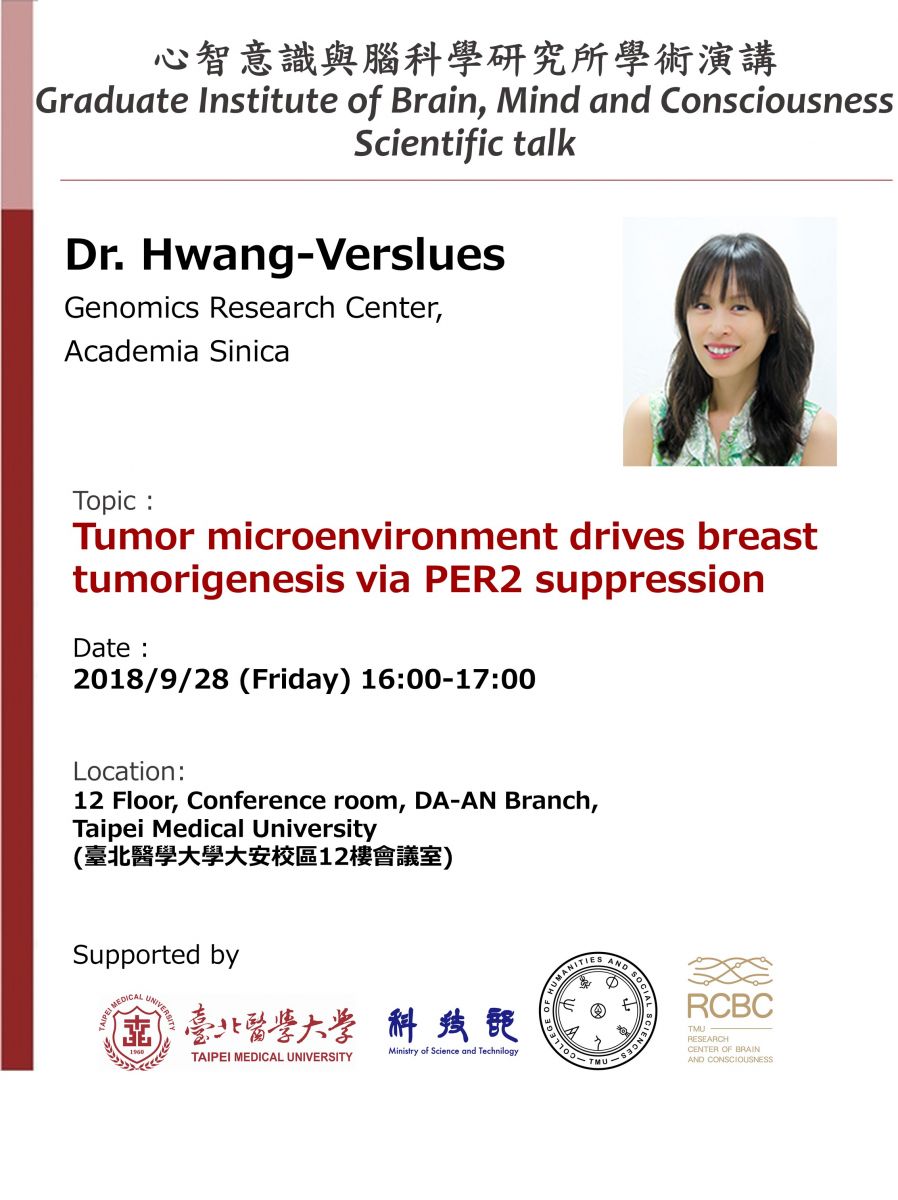Speaker: Dr. Hwang-Verslues (Genomics Research Center, Academia Sinica)
Date: 2018.9.28 (Fri.) 16:00-17:00
Location: 12 Floor, Conference room, DA-AN Branch, Taipei Medical University
Abstract:
A healthy tissue is the outcome of a complex interaction among multiple cell types and physical properties in the tissue microenvironment. Many genes participating in this interaction have rhythmic expression suggesting that circadian regulation is critical to maintain a healthy tissue homeostasis. Although it is known that diseased microenvironment is crucial to promote tumorigenesis and that cancer cells have disrupted circadian rhythms, whether there is a causal-relationship between these two facts remains elusive.
Among the circadian clock genes, we are particularly interested in Period2 (PER2) due to its rate limiting functions in circadian regulation as well as its tumor suppressive functions in various cancers. In breast cancer, we found that hypoxia, a condition commonly observed in solid tumors, caused PER2 degradation and disrupted the PER2 repressor complex leading to activation of EMT gene expression. This result was further supported by clinical data showing a significant negative correlation between hypoxia and PER2.
We also observed that paracrine signaling from the inflammatory microenvironment dampened the rhythmic expression of PER2 within hours and thereby facilitated tumorigenic potential in normal breast epithelial cells suggesting that circadian disruption may occur in the early stages of tumorigenesis. Together, our results demonstrated that diseased microenvironment disrupts rhythmic expression of core circadian genes, particularly PER2, to enhance tumorigenic activities. These studies reveal additional tumor promoting mechanisms in the complex interaction between mammary cells and the cancerous microenvironment.




